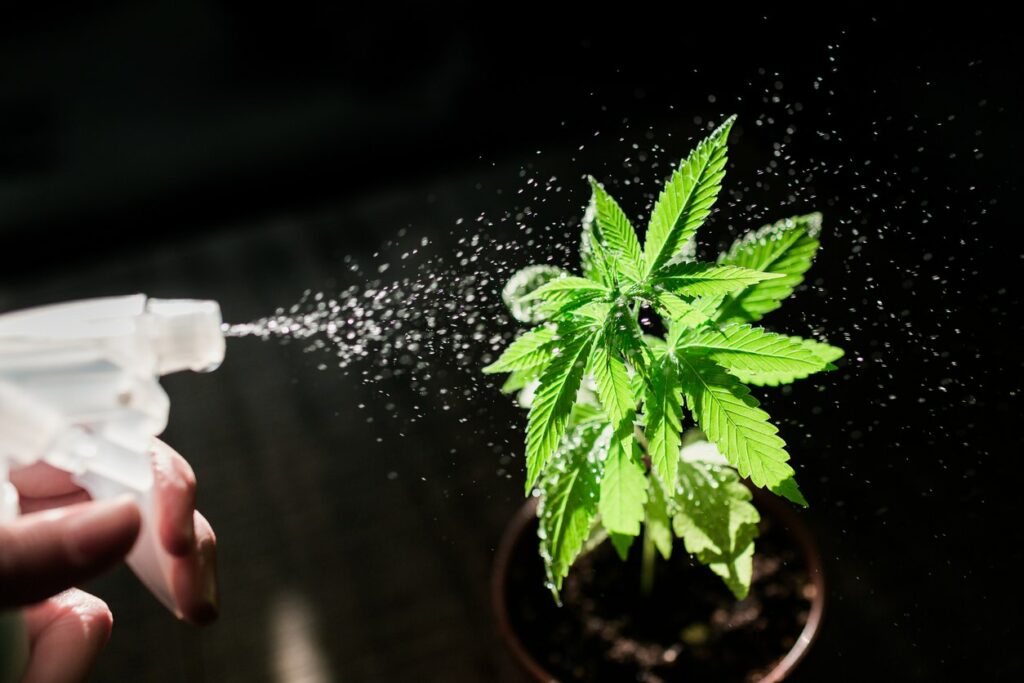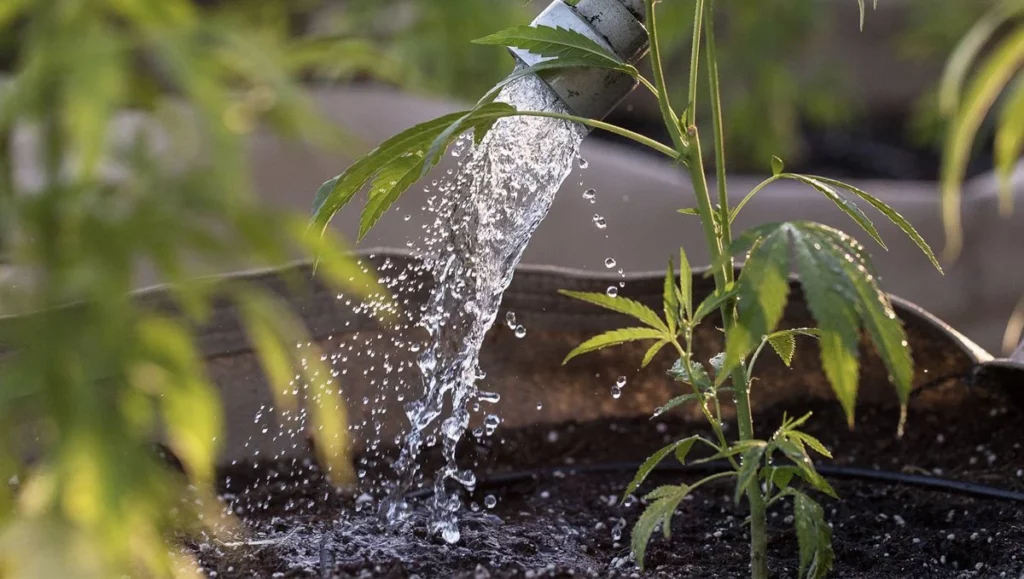Introduction
Watering is a fundamental aspect of cannabis cultivation, yet it’s often overlooked or misunderstood by novice growers. Proper watering is crucial for the health and vitality of your cannabis plants, as it ensures they receive the right amount of moisture and nutrients to thrive. In this guide, we’ll delve into the art of watering your cannabis plants, exploring the key principles, techniques, and best practices to help you achieve optimal growth and yield.
Understanding Cannabis Watering Needs

Before delving into watering techniques, grasping the distinctive water needs of cannabis plants is paramount. Typically, cannabis thrives in moist, well-draining soil facilitating proper root oxygenation. Yet, overwatering poses risks of root rot and moisture-related complications, while underwatering can stunt growth and induce nutrient deficiencies. Striking the perfect equilibrium is pivotal for fostering robust growth and optimizing yields.
Achieving this balance entails a nuanced understanding of various factors influencing watering frequency. Variables such as environmental conditions, pot size, growth stage, and genetic predispositions significantly impact the plant’s water requirements. Younger plants and seedlings, for instance, demand more frequent watering to sustain their rapid development, whereas mature plants exhibit diminished water needs. Moreover, external elements like temperature, humidity, and airflow influence soil moisture evaporation rates, necessitating adjustments to watering schedules.
Mastering watering techniques is indispensable for successful cultivation. Implementing methods such as the “watering by weight” approach and bottom watering enhances precision and efficiency in moisture management. Furthermore, adhering to essential tips, like watering in the morning to facilitate moisture evaporation, ensures optimal plant health and vigor. With a comprehensive understanding of cannabis water requirements and adept watering practices, cultivators can nurture thriving plants capable of yielding abundant harvests.
Also Read: Understanding Why Cannabis Leaves Turn Yellow: Causes and Solutions
Factors Influencing Watering Frequency
The frequency of watering your cannabis plants hinges on various factors, encompassing environmental variables, pot dimensions, growth phase, and genetic traits. Typically, younger plants and seedlings demand more frequent watering to sustain their vigorous growth trajectory, whereas mature plants exhibit diminished water needs. Furthermore, external influences like temperature, humidity levels, and airflow patterns significantly impact soil moisture evaporation rates, necessitating adaptive adjustments to watering routines.
Understanding these nuances allows cultivators to tailor their watering schedules to the specific needs of their plants, ensuring optimal hydration and growth. By monitoring environmental conditions and closely observing plant behavior, growers can refine their watering practices to strike a harmonious balance between moisture retention and oxygenation. With a proactive approach to watering and a keen eye for environmental cues, cultivators can empower their cannabis plants to thrive and flourish throughout each stage of growth.
Watering Techniques for Cannabis Plants
When it comes to watering your cannabis plants, there are several techniques you can employ to ensure thorough hydration while minimizing the risk of overwatering. One popular method is the “watering by weight” approach, where you lift the pot to gauge its moisture content. If the pot feels light, it’s time to water, whereas a heavier pot indicates that the soil is still moist and doesn’t require immediate watering. Alternatively, you can use a moisture meter to measure soil moisture levels accurately.
Another effective technique is the “bottom watering” method, where you place the pots in a shallow tray filled with water and allow the soil to absorb moisture from the bottom up. This method encourages healthy root development and helps prevent waterlogged soil. Additionally, drip irrigation systems and self-watering containers can provide a convenient and automated solution for consistent watering.
Tips for Successful Watering
To guarantee effective watering practices, adhering to essential tips is crucial. Firstly, prioritize watering your cannabis plants in the morning or early afternoon to facilitate ample time for excess moisture to evaporate before nighttime, mitigating the likelihood of fungal infections. Moreover, employing room-temperature water is advisable to prevent root shock caused by cold water exposure.
Furthermore, attentiveness to runoff and drainage is paramount to forestall waterlogging and nutrient accumulation in the soil. Monitoring runoff allows growers to gauge the efficacy of watering sessions and ensure optimal moisture distribution throughout the root zone. Additionally, maintaining proper drainage enhances soil aeration and prevents stagnant water, fostering a healthy root environment conducive to robust growth.
By incorporating these practices into their watering routines, cultivators can optimize moisture management, minimize the risk of water-related issues, and promote the overall health and vitality of their cannabis plants.
Conclusion
Mastering the art of watering your cannabis plants is essential for achieving optimal growth, health, and yield. By understanding your plants’ water needs, employing the right watering techniques, and following best practices, you can ensure that your cannabis garden thrives and flourishes. With proper watering, you’ll be well on your way to cultivating healthy, robust cannabis plants that yield bountiful harvests.

